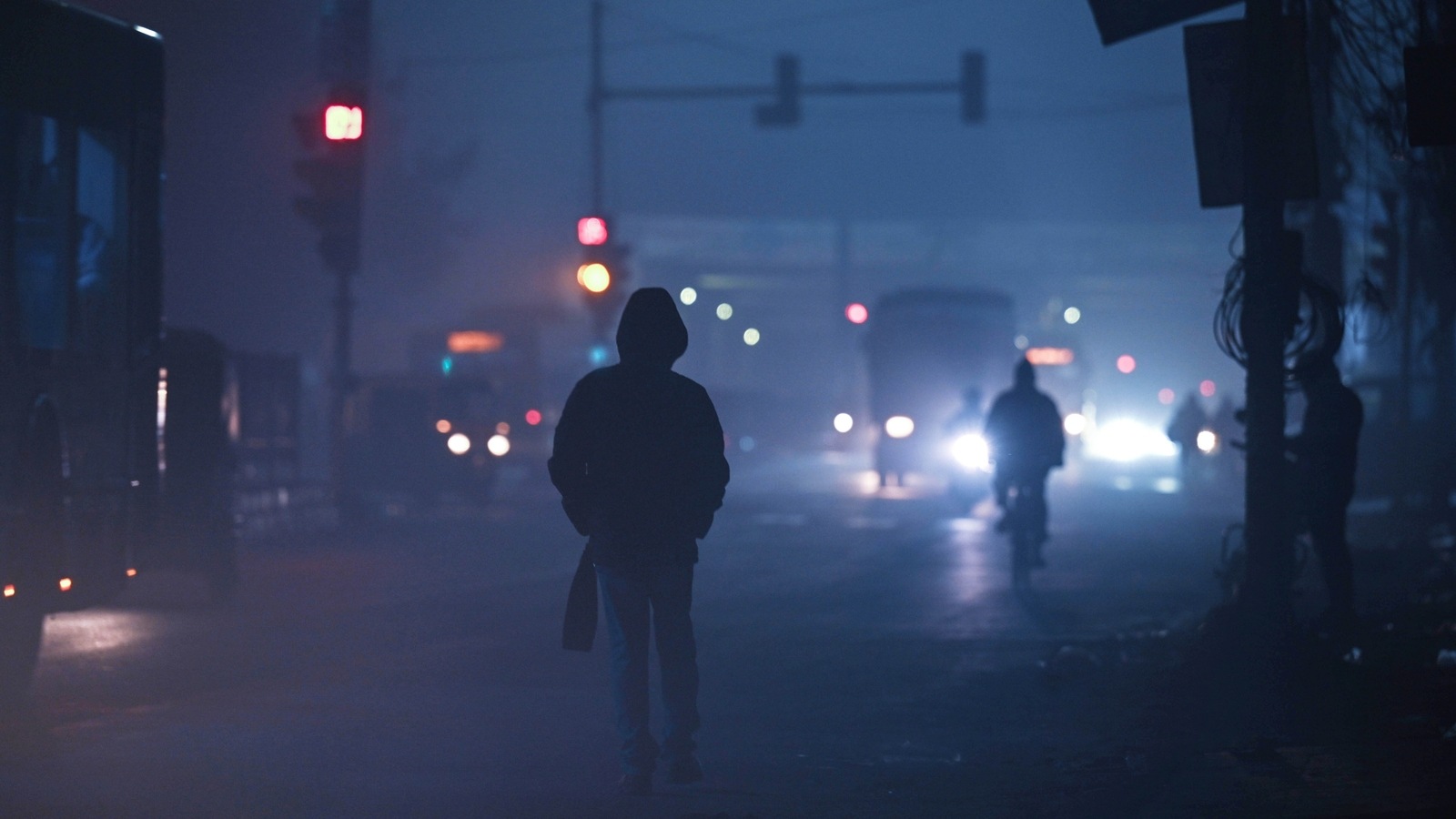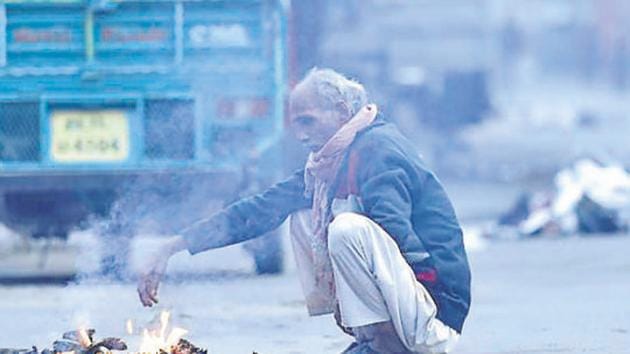Delhi Shivers as Mercury Plummets: Records Coldest Night of the Season at 11.8°C

Delhi Shivers as Mercury Plummets: Records Coldest Night of the Season at 11.8°C
In a chilly embrace, Delhi succumbed to the winter’s icy grip on Monday night, marking the coldest night of the season with the mercury plummeting to a bone-chilling 11.8°C. The Regional Meteorological Centre in the national capital confirmed that this recorded temperature was two notches below the seasonal norm, sending shivers down the spines of Delhiites.
As residents reached for extra layers and warm blankets, the maximum temperature for the day was recorded at 27.3°C, a stark contrast to the biting cold that had settled in the early hours. The sudden drop in temperature is attributed to the prevailing winter conditions, and the city is gearing up for more chilly nights in the days to come.
This frigid episode unfolds against the backdrop of another concerning phenomenon – Delhi’s air quality hitting alarming levels. On the same day, the national capital reported a real-time Air Quality Index (AQI) exceeding 900 in some locations. This dual challenge of extreme cold and hazardous air quality paints a worrisome picture for the residents, urging them to navigate through the cold while also grappling with the invisible threat in the air.

Winter’s Chill Tightens its Grip
As winter blankets the city with its frosty fingers, Delhiites are witnessing the season’s coldest nights, a stark reminder of the harsh weather conditions that characterize the northern part of India during this time of the year. The drop in temperature to 11.8°C, two notches below the normal range, underscores the severity of the winter chill that has settled over the region.
Residents are advised to take necessary precautions to safeguard themselves from the biting cold, including dressing in layers, using heaters judiciously, and staying indoors during the coldest hours of the night. Health experts emphasize the importance of staying warm to prevent cold-related illnesses, especially for vulnerable populations such as children and the elderly.
The sudden dip in temperature is attributed to the prevailing weather patterns, including clear skies and low wind speeds. These conditions create an ideal environment for the earth’s surface to lose heat rapidly, leading to a sharp drop in nighttime temperatures. As Delhi experiences these cold extremes, it prompts discussions about climate variability and the impact of changing weather patterns on daily life.
Air Quality Reaches Alarming Heights
In a concerning parallel development, Delhiites are grappling with another adversary — hazardous air quality. On the same day when the city recorded its coldest night, the real-time Air Quality Index (AQI) exceeded 900 in certain locations. The air quality in these areas is categorized as “severe,” posing a significant risk to the health of residents.
The deteriorating air quality in Delhi is not a new phenomenon, and the combination of cold weather and poor air quality creates a double-edged sword for the population. The cold weather leads to increased energy consumption for heating, while the poor air quality exacerbates respiratory issues. This confluence of environmental challenges underscores the need for a comprehensive and sustained approach to address both issues simultaneously.

Impacts on Health and Daily Life
As Delhiites navigate through this challenging juncture of extreme cold and hazardous air quality, concerns about health and daily life come to the forefront. The vulnerable populations, such as children, the elderly, and individuals with pre-existing respiratory conditions, are particularly at risk.
The plummeting temperatures can lead to various health issues, including respiratory infections, frostbite, and exacerbation of chronic illnesses. It becomes imperative for residents to adopt precautionary measures, such as using masks to protect against pollutants and ensuring proper ventilation indoors while using heaters.
Additionally, the impact on daily life is palpable. The need for warm clothing, increased consumption of heating appliances, and potential disruptions in transportation due to fog and cold-related issues pose challenges for the routine functioning of the city. Schools and workplaces may experience absenteeism, and the overall productivity of the population might witness a dip during such extreme weather conditions.
Climate Variability and Changing Weather Patterns
The current weather extremities in Delhi prompt a reflection on the larger context of climate variability and changing weather patterns. As the world grapples with the consequences of climate change, regions experience more pronounced and unpredictable shifts in weather. Delhi’s record-breaking cold night is just one piece of the larger puzzle that includes heatwaves, extreme precipitation events, and other weather anomalies.
The scientific community emphasizes the need for proactive measures to mitigate and adapt to the impacts of climate change. This includes sustainable practices, green initiatives, and international cooperation to curb greenhouse gas emissions. As the frequency and intensity of extreme weather events increase, cities like Delhi become the frontlines in the battle against the changing climate.
Government Response and Future Preparedness
In response to the dual challenge of extreme cold and hazardous air quality, the Delhi government and relevant authorities must take swift and effective measures to ensure the well-being of the residents. This includes ramping up efforts to provide shelters for the homeless, distributing warm clothing to those in need, and intensifying awareness campaigns about health precautions during such weather conditions.
Moreover, addressing the root causes of air pollution requires comprehensive policies, such as promoting public transportation, regulating industrial emissions, and investing in renewable energy sources. The government’s response to these challenges becomes a litmus test for its commitment to environmental sustainability and the health of its citizens.
Looking ahead, it becomes crucial for cities like Delhi to enhance their preparedness for extreme weather events. This involves investing in resilient infrastructure, implementing climate-smart urban planning, and fostering a culture of environmental responsibility among the residents. The current scenario serves as a wake-up call for proactive measures to build climate resilience and ensure a sustainable future for the city and its inhabitants.

Conclusion: Navigating the Cold and Pollution Storm
As Delhi faces the coldest night of the season amidst soaring pollution levels, the residents find themselves caught in a storm of challenges. The extreme cold demands layers of warmth, while the hazardous air quality requires masks and precautions. The intertwined nature of these issues emphasizes the need for a holistic approach to environmental well-being.
While the immediate focus is on mitigating the impact of the current weather conditions, the long-term solution lies in addressing the broader issues of climate change and environmental degradation. As Delhiites brave the winter chill and grapple with polluted air, the call for sustainable practices and collective action becomes more urgent than ever. In the intersection of cold and pollution, the city’s resilience is tested, and the response will determine its path towards a more sustainable and climate-resilient future.




